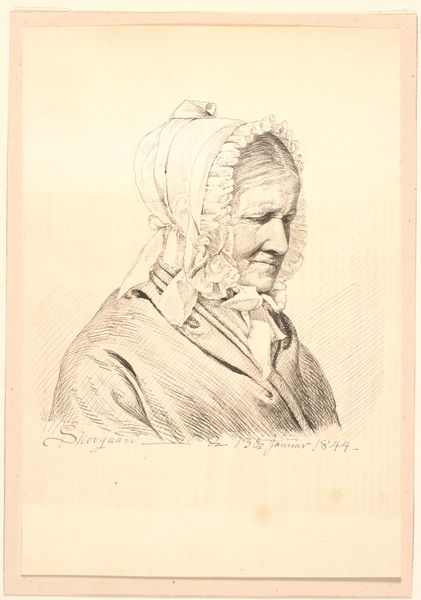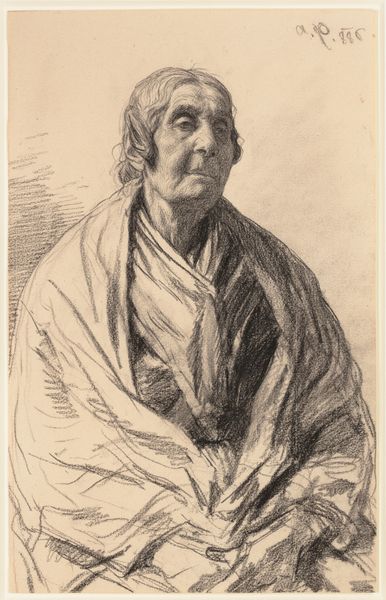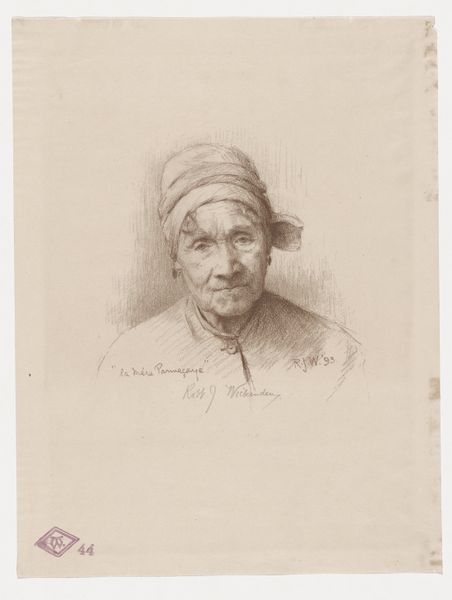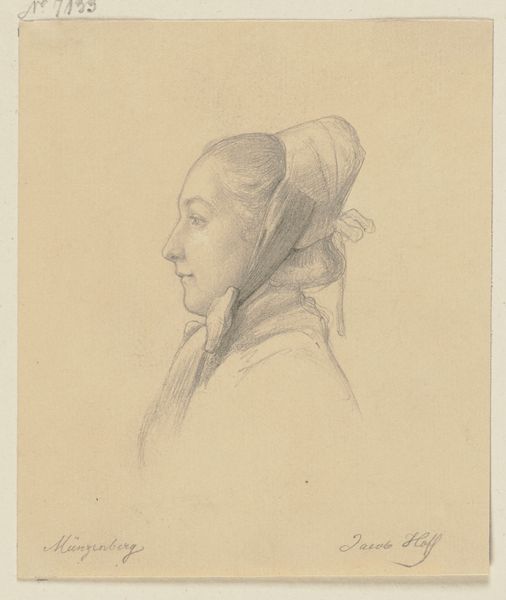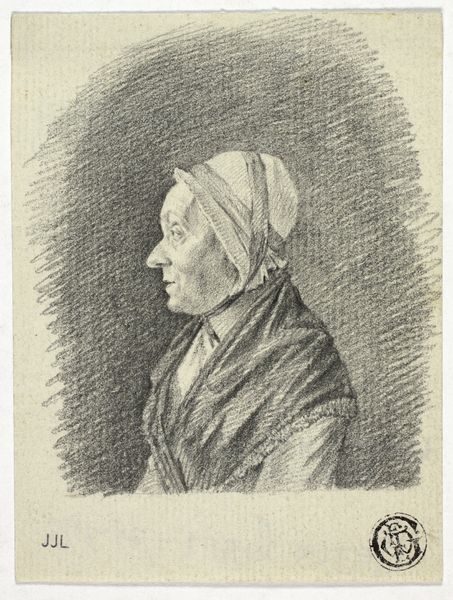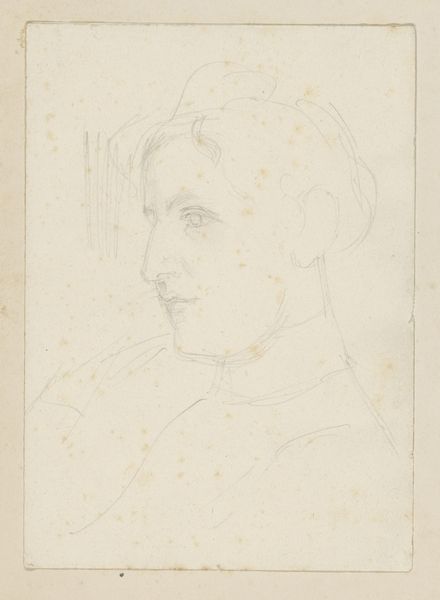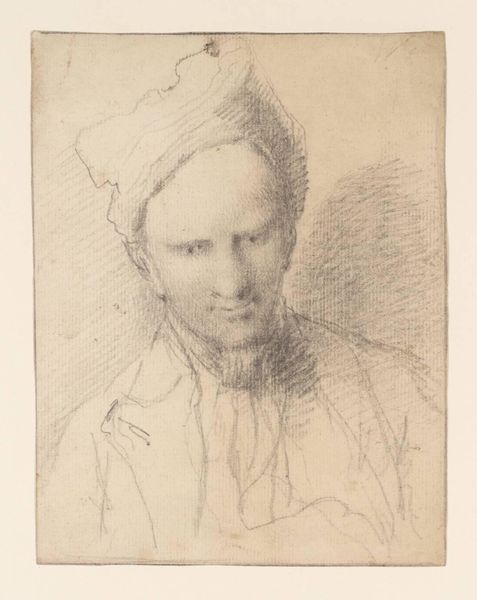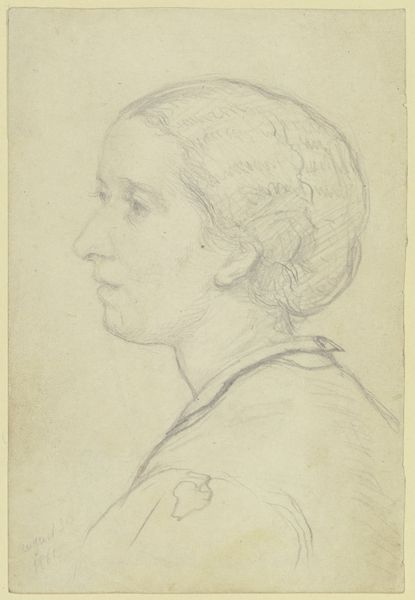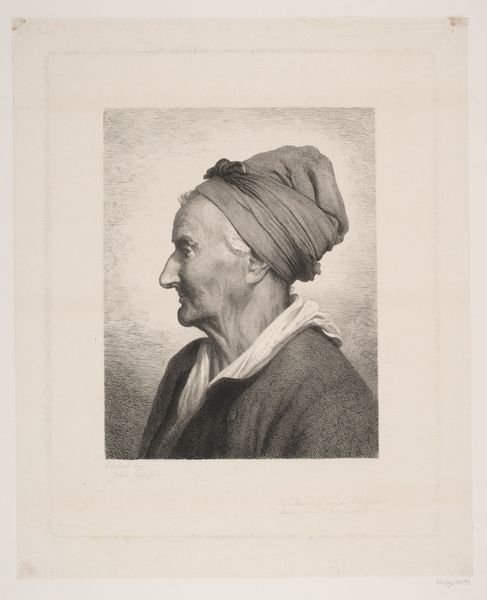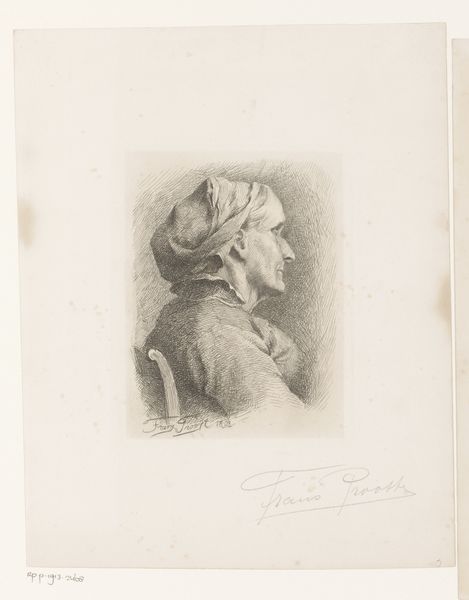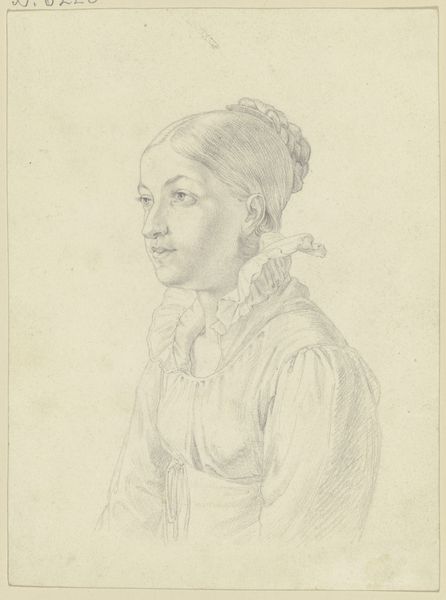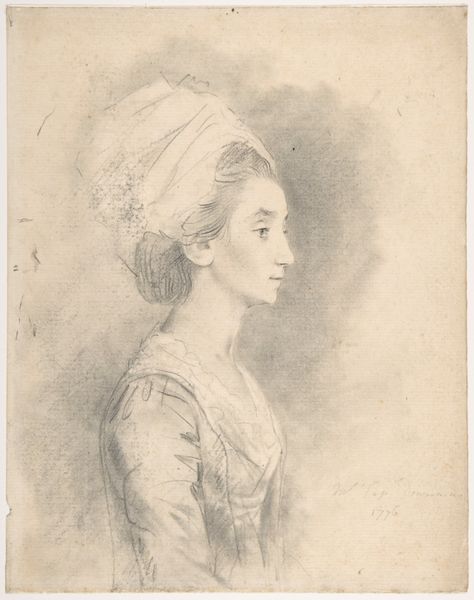
drawing, pencil
#
portrait
#
pencil drawn
#
drawing
#
pencil sketch
#
charcoal drawing
#
pencil drawing
#
pencil
#
portrait drawing
#
academic-art
#
realism
Dimensions: height 304 mm, width 220 mm
Copyright: Rijks Museum: Open Domain
Editor: So this is "Head of a Woman from Scheveningen, Seen from the Side, Facing Left," a pencil drawing by Philip Sadée, made sometime between 1847 and 1904. It has such a quiet, contemplative mood. What strikes you most about this portrait? Curator: Immediately, I think of the socio-economic realities of 19th-century Dutch fishing communities. Scheveningen was a place of immense hardship for many women. How might her expression—that resignation—reflect the limitations placed upon her, the relentless expectations? This isn’t just a likeness; it’s a social document. Editor: I hadn't thought about it that way. I was focused on the technique, the way Sadée uses light and shadow to create such a soft, realistic image. Curator: And it’s important to consider Sadée's perspective as a privileged male artist portraying a working-class woman. Whose story is really being told here? To what extent does his gaze influence our understanding? What if we considered how women were (and were not) able to represent themselves? Editor: So, while appreciating his skill, we also have to acknowledge the power dynamics at play? Curator: Exactly! This isn't just a neutral observation, it's an interaction, loaded with social and historical weight. It opens a conversation about representation and agency. Can a portrait truly capture someone’s essence, especially across social divides? Editor: It’s interesting to think about how a simple portrait drawing can reveal so much about society. Curator: It challenges us to actively consider all those silent power relationships that continue even to today. It makes the artistic expression both rich and very delicate.
Comments
No comments
Be the first to comment and join the conversation on the ultimate creative platform.

